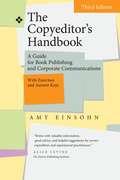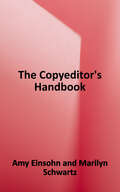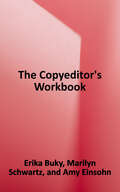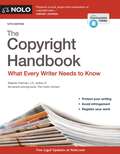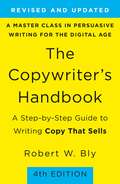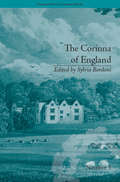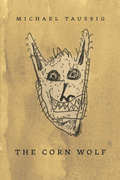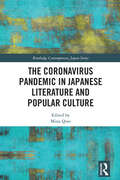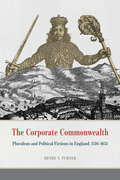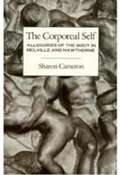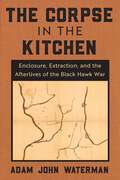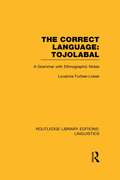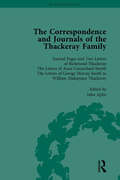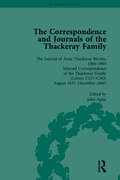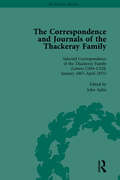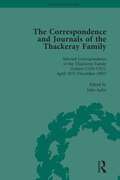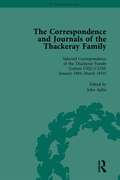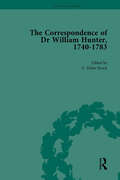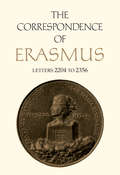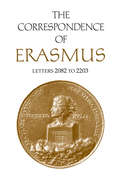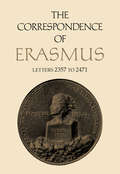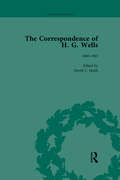- Table View
- List View
The Copyeditor's Handbook: A Guide For Book Publishing And Corporate Communications With Exercises And Answer Keys
by Amy EinsohnUnstuffy, hip, and often funny, The Copyeditor’s Handbook: A Guide for Book Publishing and Corporate Communications has become an indispensable resource both for new editors and for experienced hands who want to refresh their skills and broaden their understanding of the craft of copyediting. <P><P>This third edition incorporates the latest advice from language authorities, usage guides, and new editions of major style manuals, including The Chicago Manual of Style. It registers the tectonic shifts in twenty-first-century copyediting: preparing text for digital formats, using new technologies, addressing global audiences, complying with plain language mandates, ensuring accessibility, and serving self-publishing authors and authors writing in English as a second language. <P><P>The new edition also adds an extensive annotated list of editorial tools and references and includes a bit of light entertainment for language lovers, such as a brief history of punctuation marks that didn’t make the grade, the strange case of razbliuto, and a few Easter eggs awaiting discovery by keen-eyed readers. <P><P> The Copyeditor’s Workbook: Exercises and Tips for Honing Your Editorial Judgment—a new companion to the Handbook—offers comprehensive and practical training in the art of copyediting for both aspiring and experienced editors. More than forty exercises of increasing difficulty and length, covering a range of subject matter, enable you to advance in skill and confidence. <P><P>Detailed answer keys and explanations offer a grounding in editorial basics, appropriate usage choices for different contexts and audiences, and advice on communicating effectively and professionally with authors and clients. Whether the exercises are undertaken alone or alongside the new edition of The Copyeditor’s Handbook, they provide a thorough workout in the essential knowledge and skills required of contemporary editors.
The Copyeditor's Handbook: A Guide for Book Publishing and Corporate Communications
by Amy Einsohn Marilyn SchwartzThe new, updated edition of the handbook that should be on every copyeditor's desk. Unstuffy, hip, and often funny , The Copyeditor's Handbook has become an indispensable resource both for new editors and for experienced hands who want to refresh their skills and broaden their understanding of the craft of copyediting. <p><p>This fourth edition incorporates the latest advice from language authorities, usage guides, and new editions of major style manuals, including The Chicago Manual of Style. It registers the tectonic shifts in twenty-first-century copyediting: preparing text for digital formats, using new technologies, addressing global audiences, complying with plain language mandates, ensuring accessibility, and serving self-publishing authors and authors writing in English as a second language. <p><P>The new edition also adds an extensive annotated list of editorial tools and references and includes a bit of light entertainment for language lovers, such as a brief history of punctuation marks that didn't make the grade, the strange case of razbliuto, and a few Easter eggs awaiting discovery by keen-eyed readers. The fourth edition features updates on - the transformation of editorial roles in today's publishing environment - new applications, processes, and protocols for on-screen editing - major changes in editorial resources, such as online dictionaries and language corpora, new grammar and usage authorities, online editorial communities, and web-based research tools. <p><p>When you're ready to test your mettle, pick up The Copyeditor's Workbook: Exercises and Tips for Honing Your Editorial Judgment, the essential new companion to the handbook.
The Copyeditor's Workbook: Exercises and Tips for Honing Your Editorial Judgment
by Amy Einsohn Erika Buky Marilyn SchwartzPut your editing skills into practice with this new companion to the handbook on every copyeditor's desk. The Copyeditor's Workbook—a companion to the indispensable Copyeditor's Handbook, now in its fourth edition—offers comprehensive and practical training for both aspiring and experienced copyeditors. <p><p>Exercises of increasing difficulty and length, covering a range of subjects, enable you to advance in skill and confidence. Detailed answer keys offer a grounding in editorial basics, appropriate usage choices for different contexts and audiences, and advice on communicating effectively with authors and clients. The exercises provide an extensive workout in the knowledge and skills required of contemporary editors. <p><p>Features and Benefits - Workbook challenges editors to build their skills and to use new tools. Exercises vary and increase in difficulty and length, allowing users to advance along the way. - Answer keys illustrate several techniques for marking copy, including marking PDFs and hand marking hard copy.- Book includes access to online exercises available for download.
The Copyright Handbook
by Stephen Fishman J. D.This must-have handbook for writers and artists provides every necessary form to protect written expression under U. S. and international copyright law. With step-by-step instructions, it illustrates how to: register a written work with the copyright office determine what works can be protected transfer copyright ownership define and avoid infringement maintain electronic publishing rights This edition is completely updated to provide the latest case law and copyright regulations, including updates on all the latest cases and changes to copyright law and on electronic ling.
The Copywriter's Handbook: A Step-By-Step Guide To Writing Copy That Sells (4th Edition)
by Robert W. BlyThe classic guide to copywriting, now in an entirely updated fourth editionThis is a book for everyone who writes or approves copy: copywriters, multichannel marketers, creative directors, freelance writers, marketing managers . . . even small business owners and information marketers. It reveals dozens of copywriting techniques that can help you write both print and online ads, emails, and websites that are clear, persuasive, and get more attention—and sell more products. Among the tips revealed: * 8 headlines that work--and how to use them * The 5-step “Motivating Sequence” for generating more sales and profits * 10 tips for boosting landing page conversion rates * 15 techniques to ensure your emails get high open and click-through rates * How to create powerful “lead magnets” that double response rates * The “4 S” formula for making your copy clear, concise, and compelling This thoroughly revised fourth edition includes all new essential information for mastering copywriting in the digital age, including advice on content marketing, online videos, and high-conversion landing pages, as well as entirely updated resources. Now more indispensable than ever, Robert W. Bly's The Copywriter's Handbook remains the ultimate guide for people who write or work with copy.
The Coquette And The Boarding School (Norton Critical Editions Ser. #0)
by Bryan Waterman Hannah Webster Foster Jennifer HarrisPublished anonymously in 1797, Hannah Webster Foster’s The Coquette grabbed American interest with its ripped-from-the-headlines story of sex and scandal. A steady best seller for decades, the seduction novel was passed down through generations; indeed, its heroine became better known than the book’s author. A year later, Foster’s lesser-known follow-up, The Boarding School, provided an equally compelling portrait of women at the turn of the nineteenth century in the same epistolary form. Both novels can now be read in conversation with each other in this new Norton Critical Edition based on the respective first edition texts; the author’s original spelling, punctuation, and usage are retained while obvious printer’s errors are corrected. The texts are joined with a detailed introduction to Foster’s legacy and Elizabeth Whitman’s life along with explanatory annotations and a note on the text.
The Corinna of England, or a Heroine in the Shade; A Modern Romance: by E M Foster (Chawton House Library: Women's Novels)
by Sylvia BordoniA novel that helps you understand the British reaction to Corinne as well as of its cultural, social and gender implications.
The Corn Wolf
by Michael TaussigCollecting a decade of work from iconic anthropologist and writer Michael Taussig, The Corn Wolf pinpoints a moment of intellectual development for the master stylist, exemplifying the "nervous system" approach to writing and truth that has characterized his trajectory. Pressured by the permanent state of emergency that imbues our times, this approach marries storytelling with theory, thickening spiraling analysis with ethnography and putting the study of so-called primitive societies back on the anthropological agenda as a way of better understanding the sacred in everyday life. The leading figure of these projects is the corn wolf, whom Wittgenstein used in his fierce polemic on Frazer's Golden Bough. For just as the corn wolf slips through the magic of language in fields of danger and disaster, so we are emboldened to take on the widespread culture of academic--or what he deems "agribusiness"--writing, which strips ethnography from its capacity to surprise and connect with other worlds, whether peasant farmers in Colombia, Palestinians in Israel, protestors in Zuccotti Park, or eccentric yet fundamental aspects of our condition such as animism, humming, or the acceleration of time. A glance at the chapter titles--such as "The Stories Things Tell" or "Iconoclasm Dictionary"--along with his zany drawings, testifies to the resonant sensibility of these works, which lope like the corn wolf through the boundaries of writing and understanding.
The Cornerstone Anthology
by Alvin Granowsky Eden Force Eskin John DawkinsA language arts book that lets in the readers to a new world of literature and reading.
The Coronavirus Pandemic in Japanese Literature and Popular Culture (Routledge Contemporary Japan Series)
by Mina QiaoThis volume is the first book-length collection on Japanese literary and popular cultural responses to the coronavirus pandemic in English. Disrupting the narrative of COVID-19 as a catastrophe without precedent, this book contextualizes the COVID-19 global public health crisis and pandemic-induced social and political turbulence in a post-industrial society that has withstood multiple major destructions and disasters. From published fiction by major authors to anonymous accounts on social media, from network TV shows to contents by Virtual YouTubers (VTubers), in both "high" and "low" culturescapes, timely representations of coronavirus and individual and social livings under its impact emerge. These narratives, either personal or top-down, all endeavor to fathom this unexpected disruption of modern linear progress. Exploring the paradoxes underlying the "new normal" of Japanese society of the present day, the book collectively demonstrates how the narratives of coronavirus are not "neo-" but "re-": returning to the past, revealing existing problems and reclaiming memories lost and lessons forgotten. This edited volume will be of interest to researchers and students in the fields of Japanese culture and society, Japanese literature, and pandemic studies.
The Corporate Commonwealth: Pluralism and Political Fictions in England, 1516–1651
by Henry S. TurnerThe Corporate Commonwealth traces the evolution of corporations during the English Renaissance and explores the many types of corporations that once flourished. Along the way, the book offers important insights into our own definitions of fiction, politics, and value. Henry S. Turner uses the resources of economic and political history, literary analysis, and political philosophy to demonstrate how a number of English institutions with corporate associations—including universities, guilds, towns and cities, and religious groups—were gradually narrowed to the commercial, for-profit corporation we know today, and how the joint-stock corporation, in turn, became both a template for the modern state and a political force that the state could no longer contain. Through innovative readings of works by Thomas More, William Shakespeare, Francis Bacon, and Thomas Hobbes, among others, Turner tracks the corporation from the courts to the stage, from commonwealth to colony, and from the object of utopian fiction to the subject of tragic violence. A provocative look at the corporation’s peculiar character as both an institution and a person, The Corporate Commonwealth uses the past to suggest ways in which today’s corporations might be refashioned into a source of progressive and collective public action.
The Corporeal Self: Allegories of the Body in Melville and Hawthorne (Morningside Book)
by Sharon CameronThe Corporeal Self argues that questions about identity, conceived in bodily terms, are not only relevant for Melville and Hawthorne, the two nineteenth-century authors whose works are positioned at opposite extremes of the consideration of human identity, but lie at the heart of the American literary tradition, and have, in that tradition, their own revisionary status.
The Corpse in the Kitchen: Enclosure, Extraction, and the Afterlives of the Black Hawk War
by Adam John WatermanReassessing the archive of the Black Hawk War, The Corpse in the Kitchen explores relationships between the enclosure of Indigenous land, histories of resource extraction, and the literary culture of settler colonialism. While conventional histories of the Black Hawk War have long treated the conflict as gratuitous, Adam John Waterman argues that the war part of a struggle over the dispensation of mineral resources specifically, mineral lead—and the emergence of new cultures of killing and composition. The elemental basis for the fabrication of bullets, lead drawn from the mines of the upper Mississippi, contributed to the dispossession of Indigenous peoples through the consolidation of U.S. control over a vital military resource. Rendered as metallic type, Mississippian lead contributed to the expansion of print culture, providing the occasion for literary justifications of settler violence, and promulgating the fiction of Indigenous disappearance.Treating the theft and excarnation of Black Hawk’s corpse as coextensive with processes of mineral extraction, Waterman explores ecologies of racial capitalism as forms of inscription, documentary traces written into the land. Reading the terrestrial in relation to more conventional literary forms, he explores the settler fetishization of Black Hawk’s body, drawing out homoerotic longings that suffuse representations of the man and his comrades. Moving from print to agriculture as modes of inscription, Waterman looks to the role of commodity agriculture in composing a history of settler rapine, including literal and metaphoric legacies of anthropophagy. Traversing mouth and stomach, he concludes by contrasting forms of settler medicine with Black Hawk’s account of medicine as an embodied practice, understood in relation to accounts of dreaming and mourning, processes that are unforgivably slow and that allow time for the imagination of other futures, other ways of being.
The Correct Language, Tojolabal (Routledge Library Editions: Linguistics)
by Louanna Furbee-LoseeDefinitions of language cluster around two non-contradictory views: one that language is a shared code, a social entity, and the other that language is the knowledge that enables a native speaker to produce and understand speech. In examining the language and culture of the Tojolabal (Mayan) Indians of Mexico, this book argues that language is a cognitive system, as is culture, of which language is but a part. The author is most interested in the interfaces between language and social phenomena and between language and other systems of culture, and demonstrates that research on the dialectic between language and social context, and that between language and other systems of culture, leads to fruitful generalizations about the nature of language as a human capacity.
The Correspondence and Journals of the Thackeray Family Vol 1
by John AplinMarking the bicentenary of the birth of William Makepeace Thackeray in 1811, this five-volume set presents a collection of materials relating to the novelist and to his gifted family.
The Correspondence and Journals of the Thackeray Family Vol 2
by John AplinMarking the bicentenary of the birth of William Makepeace Thackeray in 1811, this five-volume set presents a collection of materials relating to the novelist and to his gifted family.
The Correspondence and Journals of the Thackeray Family Vol 3
by John AplinMarking the bicentenary of the birth of William Makepeace Thackeray in 1811, this five-volume set presents a collection of materials relating to the novelist and to his gifted family.
The Correspondence and Journals of the Thackeray Family Vol 4
by John AplinMarking the bicentenary of the birth of William Makepeace Thackeray in 1811, this five-volume set presents a collection of materials relating to the novelist and to his gifted family.
The Correspondence and Journals of the Thackeray Family Vol 5
by John AplinMarking the bicentenary of the birth of William Makepeace Thackeray in 1811, this five-volume set presents a collection of materials relating to the novelist and to his gifted family.
The Correspondence of Dr William Hunter Vol 1
by Helen BrockBorn in Scotland, Dr William Hunter (1718-83) pursued an extensive medical education in Glasgow, Edinburgh, London and Paris. He settled in London where he made his name as an anatomist and obstetrician before being elected to the Royal Society in 1767. This book presents all of his known correspondence, drawing upon archives around the world.
The Correspondence of Dr William Hunter Vol 2
by Helen BrockBorn in Scotland, Dr William Hunter (1718-83) pursued an extensive medical education in Glasgow, Edinburgh, London and Paris. He settled in London where he made his name as an anatomist and obstetrician before being elected to the Royal Society in 1767. This book presents all of his known correspondence, drawing upon archives around the world.
The Correspondence of Erasmus
by Desiderius Erasmus Alexander Dalzell James M. EstesThe letters in this volume reflect Erasmus' anxiety about the endemic warfare in Western Europe, the advance of the Ottoman Turks into Europe, and the increasing threat of armed conflict between Catholics and Protestants in Germany. Unable and unwilling to attend the Diet of Augsburg (June-November 1530), summoned by Emperor Charles V in the attempt to mediate a religious settlement, Erasmus corresponded with those in attendance, urging them (in vain) to preserve peace at all costs.The letters also shed light on Erasmus' controversies with Catholic critics (Luis de Carvajal and Frans Titelmans) who accused him of Lutheran sympathies, and former friends among the Protestant reformers (Gerard Geldenhouwer and others in Strasbourg), who embarrassed him by citing him in support of their views. Because of a mysterious and debilitating illness (identified in an appendix to the volume) the twelve months covered were less productive of scholarship than was usual for Erasmus, but it did see the publication of the five-volume Froben edition of St. John Chrysostom in Latin.
The Correspondence of Erasmus: Letters 2082 to 2203
by Desiderius Erasmus Alexander Dalzell James M. EstesThis volume contains the surviving correspondence of Erasmus for the first seven months of 1529. For nearly eight years he had lived happily and productively in Basel. In the winter of 1528-9, however, the Swiss version of the Lutheran Reformation triumphed in the city, destroying the liberal-reformist atmosphere Erasmus had found so congenial. Unwilling to live in a place where Catholic doctrine and practice were officially proscribed, Erasmus resettled in the quiet, reliably Catholic university town of Freiburg im Breisgau, Despite the turmoil of moving, Erasmus managed to complete the new Froben editions of Seneca and St Augustine, both monumental projects that had been underway for years. He also found time to engage in controversy with his conservative Catholic critics, as well as to write a long letter lamenting the execution for heresy of his friend Louis de Berquin at Paris. Volume 15 of the Collected Works of Erasmus series.
The Correspondence of Erasmus: Letters 2357 to 2471
by Desiderius Erasmus James M. Estes Charles FantazziMany of the letters in this volume, which covers the period August 1530 to March 1531, reflect Erasmus' anxieties over events at the Diet of Augsburg (June-November 1530), at which the first of many attempts to achieve a negotiated settlement of the religious division in Germany came to a rancorous conclusion, thus fostering the fear that religious controversy would eventually lead to war. His other chief concerns were the continued attacks on him by Catholic critics who regarded him as a clandestine Lutheran, and the insistence of many evangelical reformers that he was their spiritual father. The literary output of the period covered includes major works aimed at members of both groups.
The Correspondence of H G Wells Vol 1
by Patrick Parrinder David Smith H G WellsThis collection of H.G. Wells's correspondence draws on over 50 archives and libraries worldwide, including the papers of Wells's daughter by Amber Reeves. The book contains over 2000 letters, both business and personal. Wells's private correspondence includes letters to Winston Churchill.
